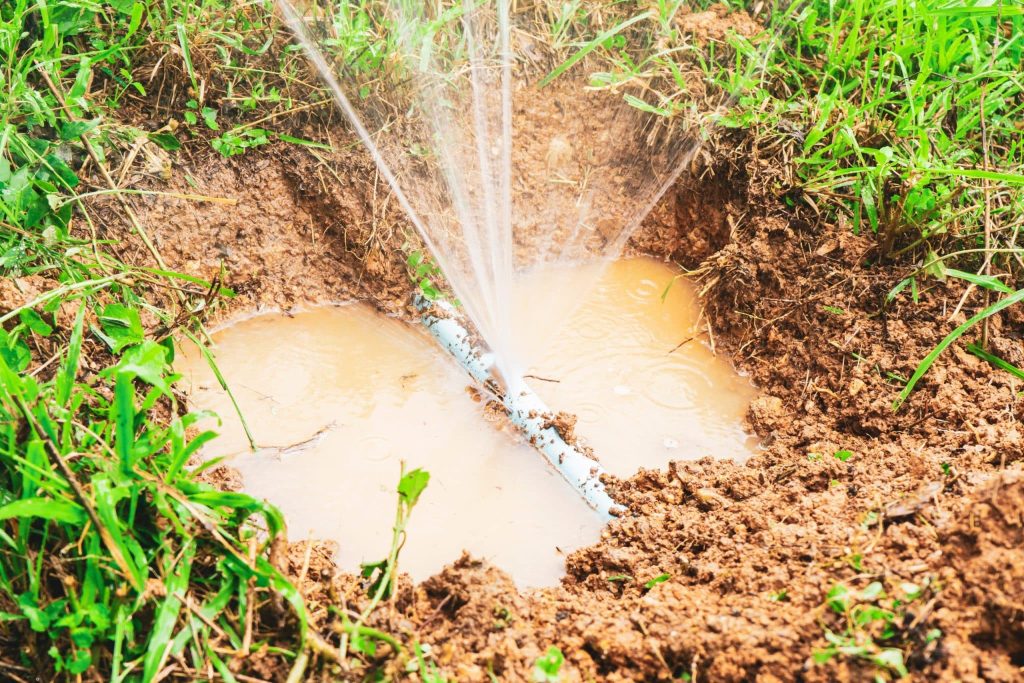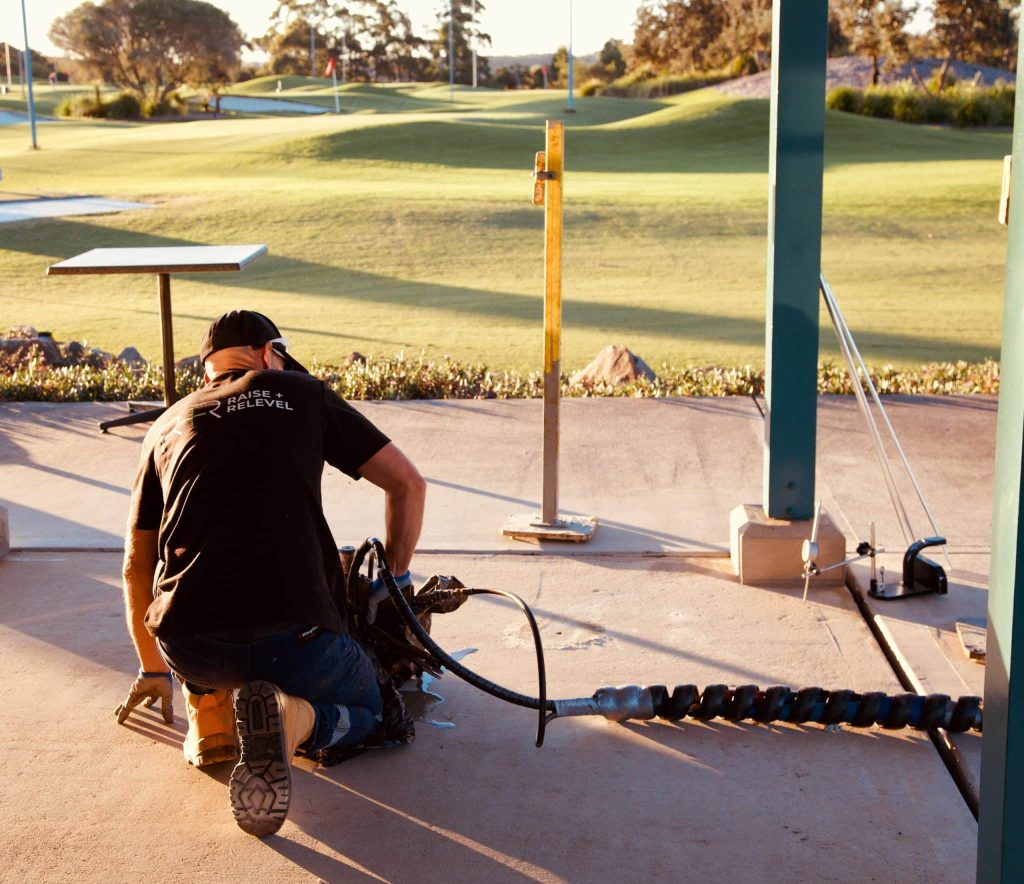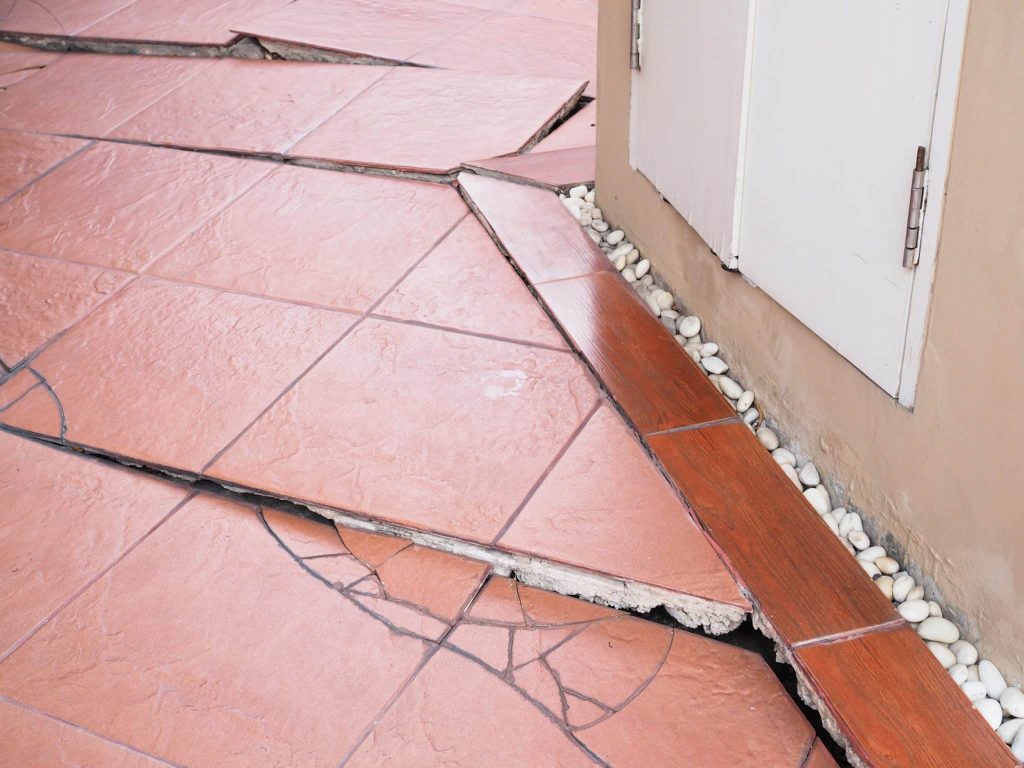The great outdoors: a place for kids to grow and learn and play. Unfortunately, popular playground areas for children have been forced to close in recent years, due to subsidence in recreational areas. A 2022 Community Engagement Report found that subsidence damage around playgrounds in the city meant that reconstruction of certain equipment was necessary, forcing further closures. Typical outdoor recreational areas include tennis courts, basket ball courts, swimming pools, skate parks and playgrounds.
Subsidence damage can affect any structure, though is commonly found in areas of heavy coastal erosion, on highly reactive soils, and areas close to construction, mining sites, or hydraulic fracking locations. But what is subsidence damage? Is it preventable? And how do we repair subsidence damage when it does occur?
What is Subsidence?
To understand what subsidence damage is, you first need to understand what subsidence is and how it occurs. Subsidence occurs when the ground beneath a structure shifts, becomes weakened or sinks due to sediment and underground soil movement. This shifting is most often caused by natural events such as heavy rainfall, large tree roots or shrubbery that sucks up moisture from the surrounding soil, causing it to become unstable, sink holes or earthquakes
However human activities can also cause significant earth movement, such broken water pipes in the ground or vibration due construction, mining or hydraulic fracking,
What is Subsidence Damage?
Subsidence damage is structural and foundational damage caused to a building by subsidence. This can include sinking floors, cracking foundations and compromised wall integrity (cracking), often leading to significant internal damage.
If you live in a mining town, you may notice coal mining subsidence damage occurring in older, abandoned homes, or you may have friends who have had subsidence occur in their home. Mine subsidence damage occurs during the use of heavy mining equipment underground, when explosives often used in coal mining cause land subsidence, as the explosive forces cause the earth around the mine to move.
The Importance of Regular Maintenance in Outdoor Recreational Areas
As our children play and grow in the outdoors, maintaining their safety in outdoor recreational areas should be one of our top priorities. These include regular council inspections of outdoor recreational equipment, as well as checking the ground for signs of subsidence, particularly if you live in an area around heavy earthmoving activity.
What Are Signs of Subsidence to Look Out For?
Given that most playgrounds either have a sand-based or gravel-based foundation, it doesn’t take much force to cause that earth beneath the play structures to move. There are a few key signs that subsidence damage may be occurring in the playground. These include:
- Large amounts of sunken earth or gravel, sinking below the soil level of the rest of the playground.
- Sinking playground equipment, or unlevel play equipment.
- Possible splintering or cracking of timbers in playground structures.
Beyond subsidence damage, look out for other maintenance that may need to be done on outdoor recreational equipment, like checking the welds of metalwork for signs of corrosion. Or checking rope structures for signs of wear and tear.
How Subsidence Ripples Through the Safety of Pool Surrounds Tennis & Basketball Courts, skate parks and playgrounds
Because subsidence damage occurs beneath the surface, it is particularly hazardous for swimming pool surrounds and tennis courts. When subsidence occurs in an area with a subsided pool (that is, a pool that is in-ground), it can cause the pool surround to become unstable, create trip hazards and make it unsafe for people to walk on, as they risk falling either onto hard concrete or into the pool.
On tennis & basket ball courts, subsidence damage can cause the earth around the court to become unstable and to either sink, or cause upheaval in the concrete construction of the court surface. This has the potential to cause player injury by creating a tripping hazard.
The Role of Polyurethane Injection in Mitigating Subsidence Impacts on Pool Surrounds and Tennis Courts
It is possible to mitigate the effects of subsidence damage on pool surrounds and tennis courts by using polyurethane injections to repair concrete damage and re-level the surface. Polyurethane injections on ground that has been damaged by subsidence usually follows a slab jacking procedure that lifts the damaged concrete up, so that the polyurethane can be injected underneath, filling gaps left behind by subsidence damage while simultaneously levelling off the ground.
Filling Cracks
One of the ways that polyurethane injections mitigate the damage caused by subsidence is it’s use in repairing the failed ground by crack and void filling. For example, if you notice that your pool surround is starting to crack and break, subsidence may be occurring beneath it. We inject a polyurethane resin, beneath the slab to simultaneously dynamically compact the ground and raise and relevel the slab.. Polyurethane resin injections are often placed in multiple points of failure in the damaged area. This creates a watertight, impermeable, sealed barrier.
Leveling the Surface
In addition to creating a sealed barrier against external elements, polyurethane resin expands dramatically to increase the ground bearing capacity and raise and relevel the surface around your pool. This also fills void left by subsidence and increases the bearing capacity of the soil, making it less likely to move and shift, if subsidence is occurring regularly due to mining or other heavy construction work in your area.
Conclusion
When it comes to playgrounds, sports locations and your home’s swimming pool, you want to ensure that your play and swim areas are safe places for those who enjoy them. Subsidence damage can cause serious safety problems and damage to play equipment or swimming pool surround.
If any subsidence damage should occur, polyurethane resin injections are one of the best methods to repair the damage and mitigate future problems as it repairs the ground bearing capacity and provides a long-lasting, impermeable sealant around the damaged area.
Frequently Asked Questions
Here are a few frequently asked questions concerning subsidence and its effects on recreational areas.
What is subsidence and how does it impact outdoor recreational areas?
Subsidence is the shifting of earth and soil beneath the surface of a playground or outdoor recreational area, caused by natural erosion or the use of heavy construction equipment or mining operations. Subsidence damage can impact by recreational outdoor areas by creating instability beneath the playing surface, causing the sinking of the earth, and making the area unsafe for children to play and run around on.
What are the common causes of subsidence in outdoor recreational areas?
There are several common causes of subsidence in outdoor recreational areas. These include:
- Excess moisture content in soils due to heavy rains.
- Soil instability is created by explosive forces like those used in mining. Watch out for mine subsidence damage around local play areas.
- The use of heavy equipment in construction nearby can result in unstable soil conditions.
- Large tree roots grow outwards underneath the play area, creating unstable soil.
How can subsidence be prevented and managed in outdoor recreational areas?
Subsidence can be prevented by regular inspections of outdoor recreational areas for signs of erosion, particularly if in an area of heavy construction activity or mining. You can also mitigate the effects of subsidence by using denser soils as an underpinning for your gravel, concrete or rubberised surface.
Manage subsidence damage by acting quickly if damage is noticed and using polyurethane injections to repair any surface cracks quickly before further subsidence occurs.





